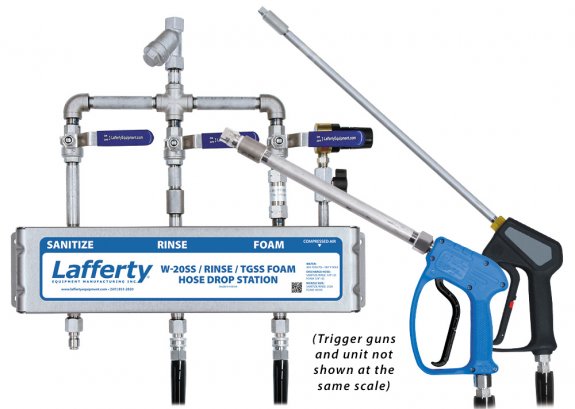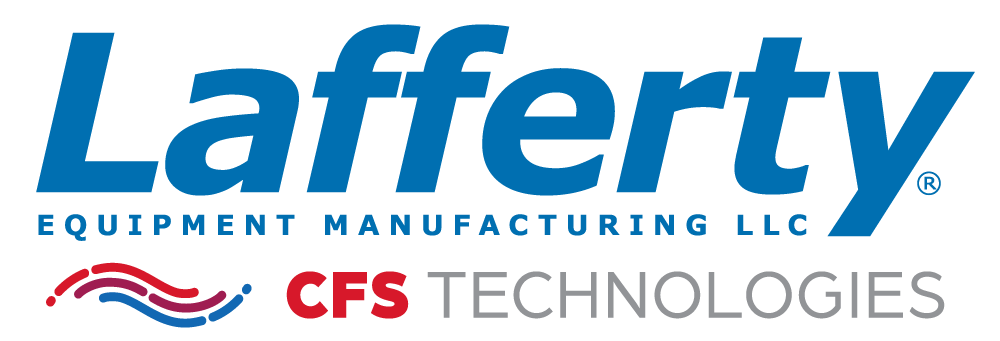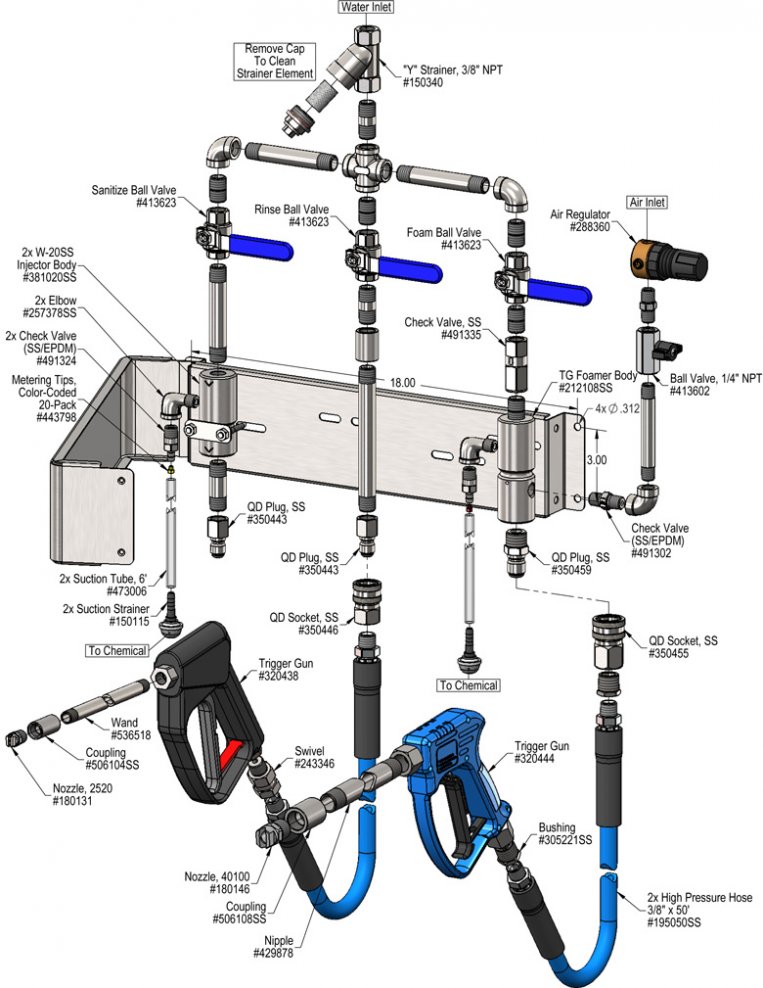Overview
The W-20SS Sanitize / Rinse / TGSS Foam Hose Drop Station is a combination trigger gun applicator for applying one chemical as foam, another as a sanitizing spray, and for rinsing. This stainless steel venturi injection system uses high water pressure (400 - 1000 PSI) to draw and blend chemical concentrates into the water streams to create accurately diluted solutions using precision metering tips to control chemical usage. Rich, clinging foam is created by injecting compressed air into the foaming solution to greatly increase volume and coverage ability. The foaming solution then flows through the foam hose, trigger gun, and fan nozzle and is projected at distances up to 10 feet. Rinse and sanitize using the second hose, trigger gun, and fan nozzle.


